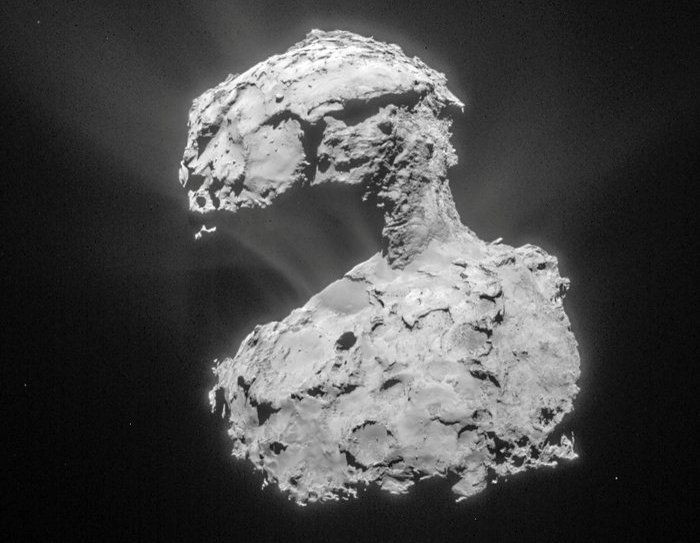ESA's Rosetta Detects Molecular Nitrogen On Comet 67P

The Rosetta spacecraft, currently tailing a gradually warming Comet 67P, has detected traces of molecular nitrogen in the comet -- a finding that can offer vital clues to the conditions prevailing during the formation of our solar system. Previously, nitrogen had only been found in comets bound inside compounds like ammonia and hydrogen cyanide, the European Space Agency (ESA) said in a statement released earlier this week.
Molecular nitrogen, N2, is believed to be one of the most abundant elements present during the infancy of our solar system. As a result, it is present in huge quantities in the dense atmosphere of Saturn’s moon Titan, Neptune’s moon Triton and the dwarf planet Pluto.
Earth’s atmosphere, with 78 percent nitrogen, is also rich in the element. However, the latest study indicates that comets like 67P were not the major source of this nitrogen.
“Identifying molecular nitrogen places important constraints on the conditions in which the comet formed, because it requires very low temperatures to become trapped in ice,” Martin Rubin from the University of Bern, who was involved in the study, said in the statement. Moreover, since nitrogen is abundant in planets and moons of the outer solar system, Rosetta's discovery suggests that 67P’s family of comets formed in the same area at temperatures low enough to freeze nitrogen into ice -- below -346 degrees Fahrenheit.
The new findings are based on measurements taken between 17 Oct. and 23 Oct., when Rosetta was about 6 miles from the centre of the comet. However, the measurements also threw up an unexpected result. The ratio of molecular nitrogen to carbon monoxide, which also forms under similar conditions, in the comet was 25 times less than what was expected from models of the early solar system.
“This depletion may be a consequence of the ice forming at very low temperatures in the protosolar nebula,” ESA said in the statement. “One scenario involves temperatures of between roughly -250 degrees Celsius ( -418 degrees Fahrenheit) and perhaps -220 degrees Celsius (-364 degrees Fahrenheit), with relatively inefficient trapping of molecular nitrogen in either amorphous water ice or cage-like water ice known as a clathrate, in both cases yielding a low ratio directly.”
Rosetta is currently traversing in hyperbolic orbits around 67P, at a distance of about 40 miles. The comet’s rotation, meanwhile, is believed to be gradually slowing down as it moves closer to the sun. Comet 67P takes about 12.4 hours to complete a rotation, but in recent days, this has been extending by about a second a day.
© Copyright IBTimes 2025. All rights reserved.






















